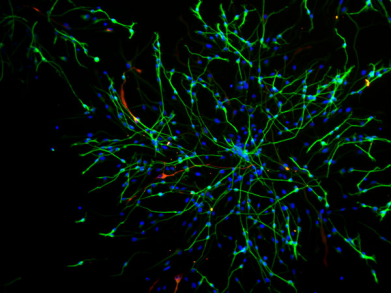Multi-channel live cell is a micro-imaging technology that can simultaneously observe multiple cell structures and processes, and use it to study the interactions, dynamic changes and interactions between cells and proteins. Mshot five-color channel inverted fluorescent microscope MF53-N facilitates multi-color fluorescence observation of cells.

The excellent optical system of the inverted fluorescence microscope MF53-N provides clear fluorescence imaging for cell observation. Its infinity achromatic independently corrected optical system, combined with a long working distance semi-complex fluorescence objective lens and a wide field of view eyepiece, enables high-quality observation of even weakly fluorescent samples. This feature is particularly important for cell studies that require high sensitivity and multicolor labeling.

The inverted fluorescence microscope MF53-N supports the observation of a variety of fluorescent dyes, including DAPI, FTC, TRITC, Alexa Fluor488/594 series, Cy3/Cy5/Cy7 series, etc., meeting the needs of scientific researchers for simultaneous fluorescent labeling of multiple cell molecules. Through the 6-well turntable fluorescence switching method, researchers can easily install up to 5 excitation devices such as BGUYR to observe different fluorescence signals and understand biological events and interactions within cells.

In terms of brightfield observation, the inverted fluorescence microscope MF53-N also has good performance. LED lighting provides bright and soft light, no need to adjust the light path, long service life, and energy saving. The push-pull phase contrast ring plate design simplifies the operation process of phase contrast observation. The imaging effect is uniform and suitable for cell observation with different signal numbers. In addition, the fluorescent lighting device uses high-power LED light sources with long life and wide optical harmonics, which have uniform brightness and a wide optical harmonic range and are ready to use. No preheating is required, further improving experimental efficiency and convenience.

